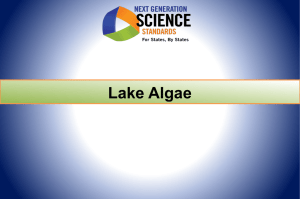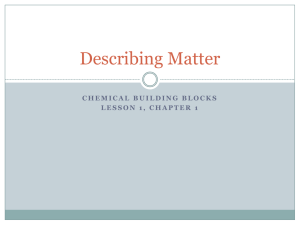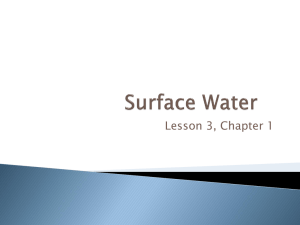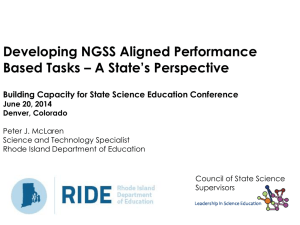Distinguish - Common Core Arkansas
advertisement
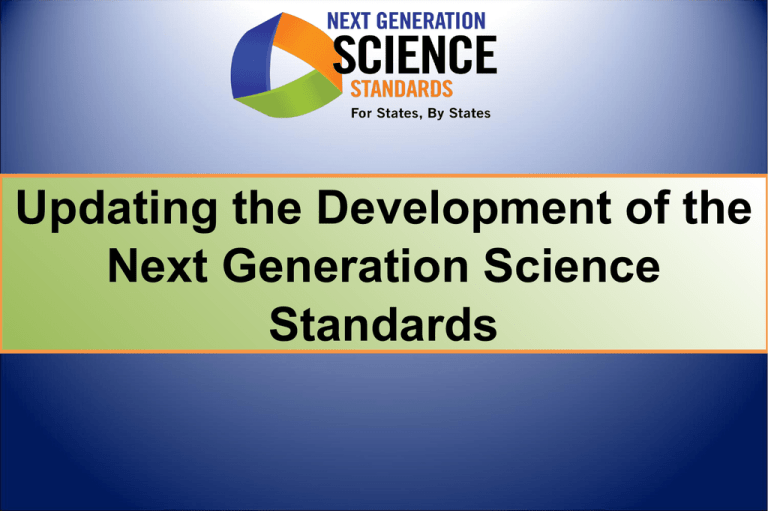
Updating the Development of the Next Generation Science Standards Great to be in the South! 2 Building on the Past; Preparing for the Future Phase I Phase II 1990s 1990s-2009 7/2010 – Early 2013 1/2010 - 7/2011 Read It For Yourself Public Releases/Timeline Goal: To distribute and receive feedback from interested stakeholders; to create a transparent process The standards opened for review May 11, 2012. The standards and the survey can be accessed at www.nextgenscience.org The review period ended on June 1, 2012. All draft standards were officially obsolete on June 1, 2012. Public Draft #2 – Late Fall Final Release – First Quarter of 2013 Three Dimensions Intertwined • The NGSS are written as Performance Expectations • NGSS will require contextual application of the three dimensions What’s Different about the Next Generation Science Standards? Sometimes Spotting the Difference is Easy Current State Science Standard Sample Inquiry Standards a. b. c. d. e. f. g. Students will explore the importance of curiosity, honesty, openness, and skepticism in science and will exhibit these traits in their own efforts to understand how the world works. Students will use standard safety practices for all classroom laboratory and field investigations. Students will have the computation and estimation skills necessary for analyzing data and following scientific explanations. Students will use tools and instruments for observing, measuring, and manipulating equipment and materials in scientific activities utilizing safe laboratory procedures. Students will use the ideas of system, model, change, and scale in exploring scientific and technological matters. Students will communicate scientific ideas and activities clearly. Students will question scientific claims and arguments effectively. Content Standards a. b. c. d. e. f. g. Distinguish between atoms and molecules. Describe the difference between pure substances (elements and compounds) and mixtures. Describe the movement of particles in solids, liquids, gases, and plasmas states. Distinguish between physical and chemical properties of matter as physical (i.e., density, melting point, boiling point) or chemical (i.e., reactivity, combustibility). Distinguish between changes in matter as physical (i.e., physical change) or chemical (development of a gas, formation of precipitate, and change in color). Recognize that there are more than 100 elements and some have similar properties as shown on the Periodic Table of Elements. Identify and demonstrate the Law of Conservation of Matter. Standards Comparison: Structure and Properties of Matter Current State Middle School Science Standard a. b. c. d. e. f. g. Distinguish between atoms and molecules. Describe the difference between pure substances (elements and compounds) and mixtures. Describe the movement of particles in solids, liquids, gases, and plasmas states. Distinguish between physical and chemical properties of matter as physical (i.e., density, melting point, boiling point) or chemical (i.e., reactivity, combustibility). Distinguish between changes in matter as physical (i.e., physical change) or chemical (development of a gas, formation of precipitate, and change in color). Recognize that there are more than 100 elements and some have similar properties as shown on the Periodic Table of Elements. Identify and demonstrate the Law of Conservation of Matter. NGSS Middle School Sample a. b. c. d. Construct and use models to explain that atoms combine to form new substances of varying complexity in terms of the number of atoms and repeating subunits. Plan investigations to generate evidence supporting the claim that one pure substance can be distinguished from another based on characteristic properties. Use a simulation or mechanical model to determine the effect on the temperature and motion of atoms and molecules of different substances when thermal energy is added to or removed from the substance. Construct an argument that explains the effect of adding or removing thermal energy to a pure substance in different phases and during a phase change in terms of atomic and molecular motion. Standards Comparison: Structure and Properties of Matter Current State Middle School Science Standard a. b. c. d. e. f. g. Distinguish between atoms and molecules. Describe the difference between pure substances (elements and compounds) and mixtures. Describe the movement of particles in solids, liquids, gases, and plasmas states. Distinguish between physical and chemical properties of matter as physical (i.e., density, melting point, boiling point) or chemical (i.e., reactivity, combustibility). Distinguish between changes in matter as physical (i.e., physical change) or chemical (development of a gas, formation of precipitate, and change in color). Recognize that there are more than 100 elements and some have similar properties as shown on the Periodic Table of Elements. Identify and demonstrate the Law of Conservation of Matter. NGSS Middle School Sample a. b. c. d. Construct and use models to explain that atoms combine to form new substances of varying complexity in terms of the number of atoms and repeating subunits. Plan investigations to generate evidence supporting the claim that one pure substance can be distinguished from another based on characteristic properties. Use a simulation or mechanical model to determine the effect on the temperature and motion of atoms and molecules of different substances when thermal energy is added to or removed from the substance. Construct an argument that explains the effect of adding or removing thermal energy to a pure substance in different phases and during a phase change in terms of atomic and molecular motion. Standards Comparison: Structure and Properties of Matter Current State Middle School Science Standard a. b. c. d. e. f. g. Distinguish between atoms and molecules. Describe the difference between pure substances (elements and compounds) and mixtures. Describe the movement of particles in solids, liquids, gases, and plasmas states. Distinguish between physical and chemical properties of matter as physical (i.e., density, melting point, boiling point) or chemical (i.e., reactivity, combustibility). Distinguish between changes in matter as physical (i.e., physical change) or chemical (development of a gas, formation of precipitate, and change in color). Recognize that there are more than 100 elements and some have similar properties as shown on the Periodic Table of Elements. Identify and demonstrate the Law of Conservation of Matter. NGSS Middle School Sample a. b. c. d. Construct and use models to explain that atoms combine to form new substances of varying complexity in terms of the number of atoms and repeating subunits. Plan investigations to generate evidence supporting the claim that one pure substance can be distinguished from another based on characteristic properties. Use a simulation or mechanical model to determine the effect on the temperature and motion of atoms and molecules of different substances when thermal energy is added to or removed from the substance. Construct an argument that explains the effect of adding or removing thermal energy to a pure substance in different phases and during a phase change in terms of atomic and molecular motion. Conceptual Shifts in the NGSS 1. K–12 Science Education Should Reflect the Real World Interconnections in Science 2. Standards are not curricula and as such should not limit using all practices and crosscutting concepts during instruction 3. Science concepts build coherently across K-12 4. The NGSS Focus on Deeper Understanding and Application of Content 5. Integration of science and engineering 6. Coordination with Common Core State Standards Language was based on Framework and expanded into Matrices NRC Framework language from Grade Band Endpoints Language was based on Framework and expanded into Matrices Language was based on Framework and expanded into Matrices NRC Framework language from Grade Band Endpoints Language was based on Framework and expanded into Matrices Using the Next Generation Science Standards Performance Expectations Students who demonstrate understanding can: Evaluate data to explain resource availability and other environmental factors that affect carrying capacity of ecosystems. Design solutions for creating or maintaining the sustainability of local ecosystems. Construct arguments from evidence about the effects of natural biological or physical disturbances in terms of the time needed to reestablish a stable ecosystem and how the new system differs from the original system. Use evidence to construct explanations and design solutions for the impact of human activities on the environment and ways to sustain biodiversity and maintain the planet’s natural capital. Provide evidence to support explanations of how elements and energy are conserved as they cycle through ecosystems and how organisms compete for matter and energy. Lake Algae On June 1, a fast growing species of algae is accidentally introduced into a lake in a city park. It starts to grow and cover the surface of the lake in such a way that the area covered by the algae doubles every day. If it continues to grow unabated, the lake will be totally covered and the fish in the lake will suffocate. At the rate it is growing, this will happen on June 30. a. When will the lake be covered half-way? b. On June 26, a pedestrian who walks by the lake every day warns that the lake will be completely covered soon. Her friend just laughs. Why might her friend be skeptical of the warning? Lake Algae c. On June 29, a clean-up crew arrives at the lake and removes almost all of the algae. When they are done, only 1% of the surface is covered with algae. How well does this solve the problem of the algae in the lake? d. Write an equation that represents the percentage of the surface area of the lake that is covered in algae as a function of time (in days) that passes since the algae was introduced into the lake. Fully explain the equation and your justifications for the relationships expressed in the equation. Lake Algae e. Using the available data, construct an argument that supports or refutes the problem’s claim that the fish will suffocate if the algae species is allowed to grow unabated. Your argument should use evidence to discuss regarding resource availability and other environmental factors specifically including competition for resources. f. Given the disturbance created by the algae, design a solution to ensure the stability of the lake ecosystem. Be sure to include claims with supporting evidence as to the time needed to return the lake to a stable state and an analysis of the impact of human intervention on the ecosystem. The design should be fully supported in a written report or oral presentation. CCSS Mathematics Content CCSS Mathematics • A-CED.1 Create equations and inequalities in one variable and use them to solve problems. Include equations arising from linear and quadratic functions, and simple rational and exponential functions. – Evidence: Create an exponential equation, which includes determining p0 • F-BF.1 Write a[n accurate exponential] function that describes the relationship between two quantities – Evidence: Accurately writes a function that explains the relationship between algae and time • F-LE.2 Construct an [accurate] exponential function, given a description of a relationship – Evidence: Accurately constructs the function for algae versus time Resources Supporting NGSS Science and Engineering Practices Matrix Crosscutting Concept Matrix Connections to Engineering, Technology, and Applications of Science Matrix Nature of Science Matrix All Standards, All Students NSTA What Can or Should We Do Now? Understand the Framework Focus on the Vision of the Framework Focus on understanding the Science and Engineering Practices Embrace the Opportunity Opportunity Contact Information Stephen Pruitt, Ph.D. Vice President, Content, Research and Development spruitt@achieve.org www.nextgenscience.org

